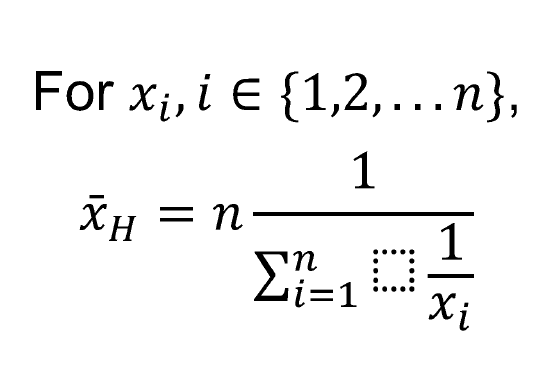Authors

Angus Lockhart

Viet Vu
Contributors
- Nina Rafeek Dow
- Mariana Rodrigues
- Sam Andrey
- Tanya Coyle
- Suzanne Bowness
June 2024


Angus Lockhart

Viet Vu
Who are Canada’s tech workers? If Canada is to fully realize and share the benefits of the digital economy, we need to get to know the people working in and creating economic and social value in this sector.
After all, new and emerging software-driven technologies such as generative AI, blockchain, and cloud computing continue to reshape our lives — everything from how we work and communicate, to how we manage our finances or monitor our health. These advancements underscore the significant role technology plays in bolstering Canada’s economy, particularly in addressing our ongoing productivity challenges. At the Dais, we are committed to understanding and leveraging these technological shifts to build shared prosperity and citizenship across Canada.
In these reports, part of our Canada’s Got Tech Talent series, the Dais’ Viet Vu, Acting Director of Policy and Research and Angus Lockhart, Senior Policy Analyst, offer a comprehensive analysis of the Canadian tech workforce — who they are, how many, and how they are compensated. This research is essential for identifying and addressing the inequalities that persist within the tech sector so that we can ensure that technology benefits all Canadians, not just a select few.
In the first report, we delve into the size and pay of the tech workforce in Canada. Canada has nearly one million people working in technology, as defined by the degree of digital and technical skills needed for their jobs. However, the sector is not yet unified. The uneven distribution of these jobs across provinces and the narrowing pay gap between tech and non-tech workers highlight areas that require attention and action from investors and policymakers.
The second report shifts focus to the demographic composition of the tech workforce, uncovering disparities that must be addressed to promote shared prosperity. The findings are striking: the gender pay gap has widened. Visible minorities and non-permanent residents continue to be underpaid compared to their peers. Indigenous peoples are significantly underrepresented in tech jobs. These inequalities contribute to broader societal disparities and must be tackled to foster a more equitable tech sector.
By providing these analyses, we aim to equip policymakers, industry leaders, and educators with the insights needed to make informed decisions for a tech workforce that better reflects Canada. Our goal is to ensure that all Canadians can participate in and benefit from the opportunities created by technological advancements.
As we continue our work at the Dais, we remain dedicated to advancing knowledge and shaping practices that ensure everyone, especially underserved groups, can access career opportunities and contribute to our shared prosperity. The findings in these reports are a crucial step in understanding and addressing the challenges and opportunities within Canada’s tech sector, paving the way for a more inclusive and productive future.
I hope you find these reports insightful. Please stay tuned this fall for more reports in this series, covering the impact of economic growth on tech workers, the financial health of tech workers, and productivity and AI.
Sincerely,
Karim Bardeesy
Executive Director
The Dais, Toronto Metropolitan University
Canada’s Got Tech Talent report series provides a comprehensive overview of the size of the tech workforce in Canada, where tech work is growing and shrinking geographically, the demographics of who Canadian tech workers are, and their pay and participation rates.
Using the most comprehensive data source on workers in Canada, the 2021 long form Canadian census, we examine whether there has been any growth from 2016 to 2021—a period that saw tremendous changes in the Canadian economy—while taking stock on progresses (or lack thereof) made to advance diversity in the tech workforce.
From being billed as a solution to Canada’s “productivity crisis”, to villains in a story of careless tech leaders creating net societal ills, the tech sector, and its leaders, have never been under a finer microscope as it has been in 2024.
Tech workers have been working in the economy for years, not just by creating new technologies, but by helping people and organizations use and maintain existing technologies.
For Canada to create the right policy that helps attract the best tech talent to contribute to solving the country’s productivity crisis, and ensure responsible governance of how new technology is developed, it is crucial to understand the landscape of those who currently work in the tech sector.
Canada’s Got Tech Talent an update of the 2019 Who Are Canada’s Tech Workers report to assess what has changed since 2016 using Census 2021 data.

BOLD IDEA: In an economy increasingly influenced by the rapid rise of technology, understanding the make-up of Canada’s tech workforce is crucial to identifying opportunities to improve the nation’s competitive edge on the world stage.

BOLD IDEA: There are big diversity challenges within Canada’s tech workforce. Addressing the barriers that exist for women, Indigenous Peoples, and other marginalized tech workers is a critical step in moving the sector forward.
In this appendix, we detail the full methodology we employed. Following the approach of Who Are Canada’s Tech Workers, we identify tech occupations based on the skills that make up a tech occupation.
To identify occupations that require digital skills in Canada (tech occupations), we rely on the United States Department of Labour’s Occupational Information Network (O*NET) database. This database contains information on 923 distinct occupations on different aspects of the jobs. This work relies on information relating to occupational skills, knowledges, and work activities (SKWs). This data is collected from either job incumbents or occupational experts and is updated periodically to remain accurate.
To select the SKWs relevant to digital skills, we apply two principles (drawn directly from Who Are Canada’s Tech Workers):
The first principle relates directly to the decision of which SKWs to include in the analysis, while the second provides direction on how to aggregate the included SKWs. This second principle is discussed in more detail below.
Using these principles, we identified six SKWs that are tracked within O*NET that constitute tech skills:
For each of these SKWs, O*NET tracks two distinct measures: level and importance. Level refers to the level at which one is required to know the SKW – higher levels will require more complex knowledge of the SKW. Conversely, importance refers to how vital a given SKW is to an occupation – while an occupation can be required to perform a task at a high level of complexity, that knowledge may not be used frequently in the occupation.
Both level and importance are measured using ordinal scales (for level, the scale ranges from 1 to 7, while for importance the scale ranges from 1 to 5). In both cases, a higher score indicates either a higher level of importance or level of complexity. However, as the scales are ordinal rather than linear, we cannot compare changes directly. For example, an increase of importance from 1 to 2 does not necessarily reflect a doubling of importance, and it is also not necessarily the same as an increase from 2 to 3 or 3 to 4.
Additionally, each SKW is scored using a unique set of levels – specific anchors are given for different values and these anchors are not comparable across SKWs. For example, a 3 for level for “Mathematics” is not necessarily the same as a 3 for “Programming” and so these are not directly comparable.
To solve for this, we focus on the ordinal scale within each SKW (whether one number is larger than another) rather than the cardinal scale (by how much one number is larger than another).
As a result, we rank all occupations within each of the SKWs listed above, then aggregate the resulting six rankings into one composite measure. This is done by multiplying importance and level together and taking the harmonic mean of the results.
Combining the two measures for each SKW is O*NET’s recommended way of using them, as it incorporates both the complexity and the importance of a particular SKW to an occupation. While O*NET also recommends normalizing the two scales before combining them, as the two measures have different ranges, we do not do that here as we are not interested in cardinal measures. Instead, after multiplying the raw scores, we use them to rank each occupation for each of the six tech skills we selected.
We then use the harmonic mean to aggregate all six SKW scores together. A harmonic mean is defined as the reciprocal to the arithmetic mean of the reciprocals of the inputs:

This has distinct benefits over traditional (arithmetic) means or geometric means. Harmonic means reward highly scoring occupations on any SKWs, while not penalize an occupation for ranking lowly on a different SKW. This follows the second principle outlined above, stating that as long as an occupation relies heavily on any one tech SKW it should be a tech occupation.
To convert this American data and match it to Canadian data, we manually connect O*NET occupations to Canadian National Occupational Categories (NOCs) using the 5 digit level for NOCs. There are 510 NOCs at this level of specificity. While previous work has compared O*NET occupations to 4 digit NOC occupations, recent updates to the NOC methodology mean that current 5 digit NOCs are most comparable to O*NET occupations.
Using the methodology for ranking tech work above, we identified the most digitally intensive occupations in Canada. Consistent with the methodology from Who are Canada’s Tech Workers, occupations in the 95th percentile and above are classified as tech occupations. Those occupations are listed below:
| Aerospace engineers Broadcast technicians Chemical engineers Computer and information systems managers Computer engineers (except software engineers and designers) Computer network and web technicians Computer systems developers and programmers Cybersecurity specialists Data scientists Database analysts and data administrators Electrical and electronics engineers Financial and investment analysts Geological engineers Industrial designers Industrial engineering and manufacturing technologists and technicians | Information systems specialists Information systems testing technicians Mechanical engineers Metallurgical and materials engineers Mining engineers Other professional engineers Other professional occupations in physical sciences Physicists and astronomers Software developers and programmers Software engineers and designers Telecommunication carriers managers Telecommunications equipment installation and cable television service technicians Telecommunications line and cable installers and repairers Web designers Web developers and programmers |

